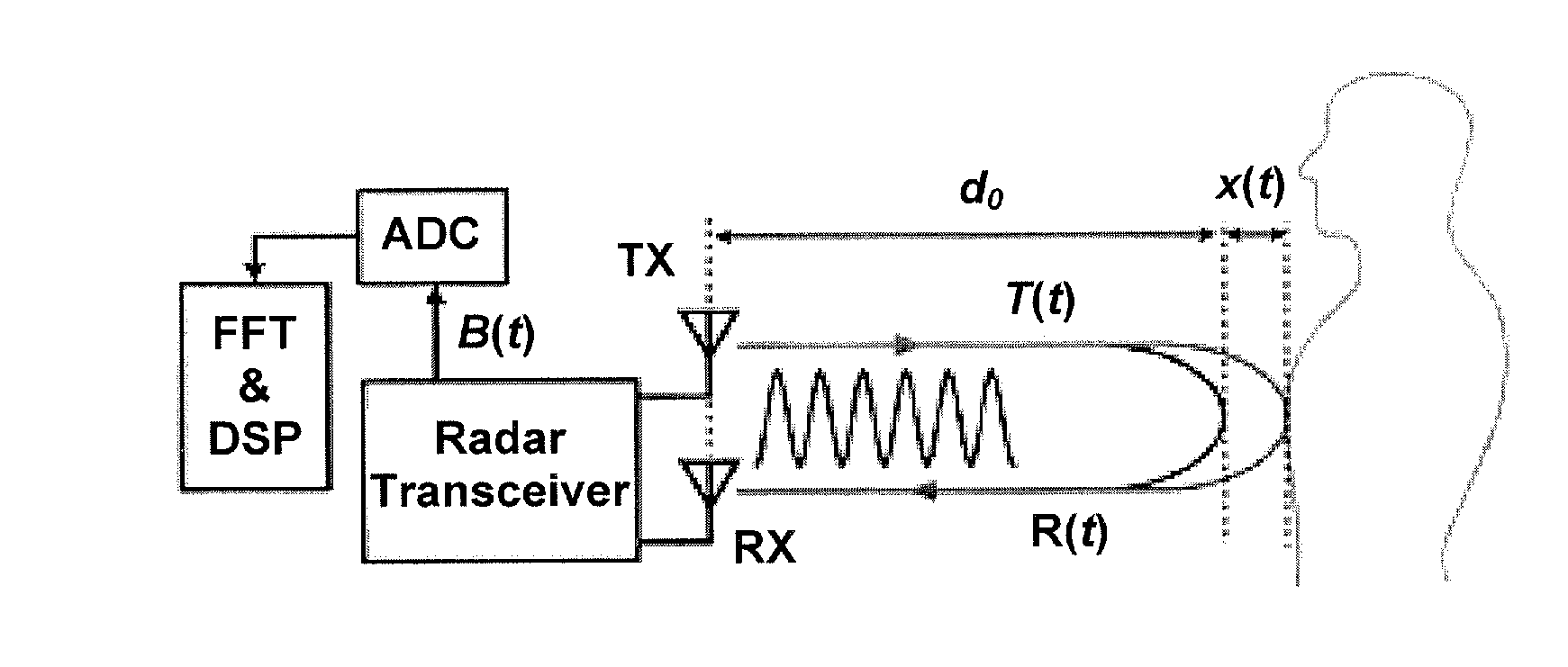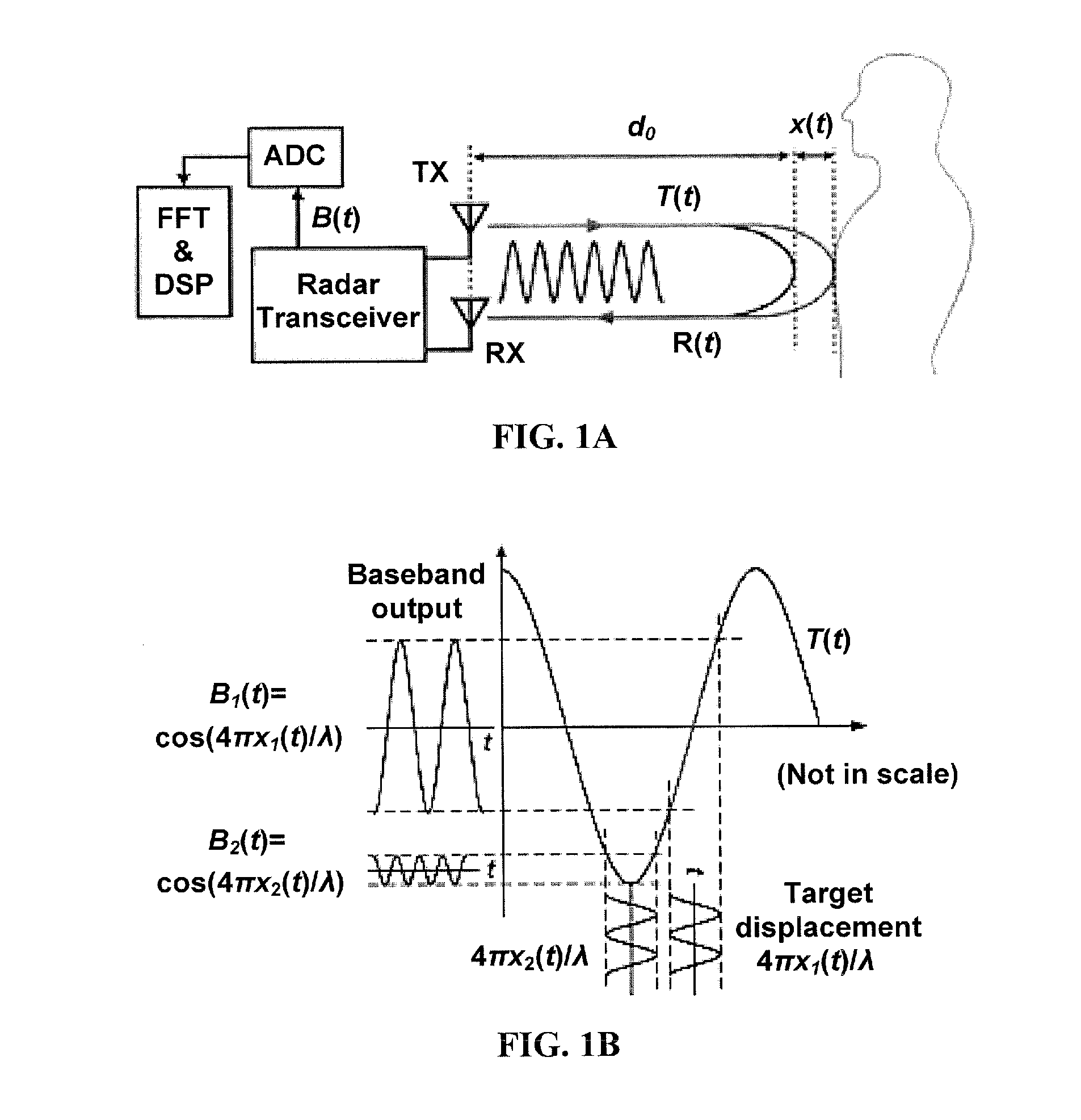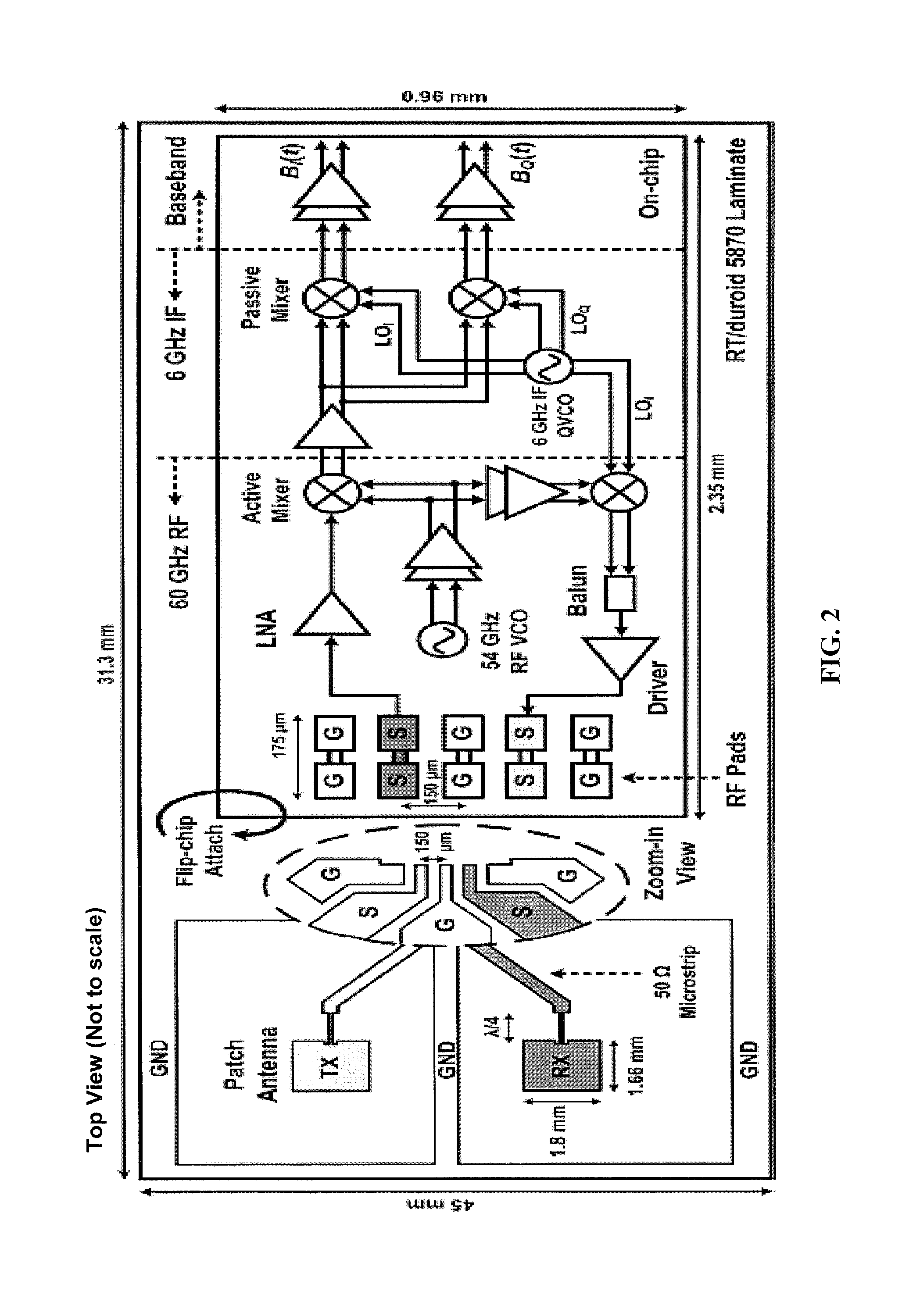Method and apparatus for doppler radar signal recovery of target displacement
a technology of target displacement and radar signal, which is applied in the field of method and apparatus for target displacement recovery of doppler radar signal, can solve problems such as system noise and non-ideality
- Summary
- Abstract
- Description
- Claims
- Application Information
AI Technical Summary
Benefits of technology
Problems solved by technology
Method used
Image
Examples
Embodiment Construction
[0034]Embodiments of the subject method and apparatus can increase the accuracy of non-contact vital sign and vibration detection when the target displacement is comparable to the radar wavelength. Vital signs that can be detected include a frequency of respiration and a heart rate. Such vital signs can be detected for a human, or an animal that is not a human, such as a dog, a cat, a horse, or other animal. As a result, a 60-GHz Doppler radar system, for example, can be used for healthcare, biomedical sensors, and vibration / security monitoring in various environments. The antenna and component sizes, which are inversely proportional to wavelength, can be greatly reduced by using 60-GHz or higher radar frequencies rather than 2.4 GHz, 5.8 GHz, or 24 GHz systems. In addition, if the radar chip is implemented in a low-cost Complementary Metal-Oxide-Semiconductor (CMOS) process, the radar system including antennas can be easily integrated into popular smartphones and tablet devices. Ac...
PUM
 Login to View More
Login to View More Abstract
Description
Claims
Application Information
 Login to View More
Login to View More - R&D
- Intellectual Property
- Life Sciences
- Materials
- Tech Scout
- Unparalleled Data Quality
- Higher Quality Content
- 60% Fewer Hallucinations
Browse by: Latest US Patents, China's latest patents, Technical Efficacy Thesaurus, Application Domain, Technology Topic, Popular Technical Reports.
© 2025 PatSnap. All rights reserved.Legal|Privacy policy|Modern Slavery Act Transparency Statement|Sitemap|About US| Contact US: help@patsnap.com



